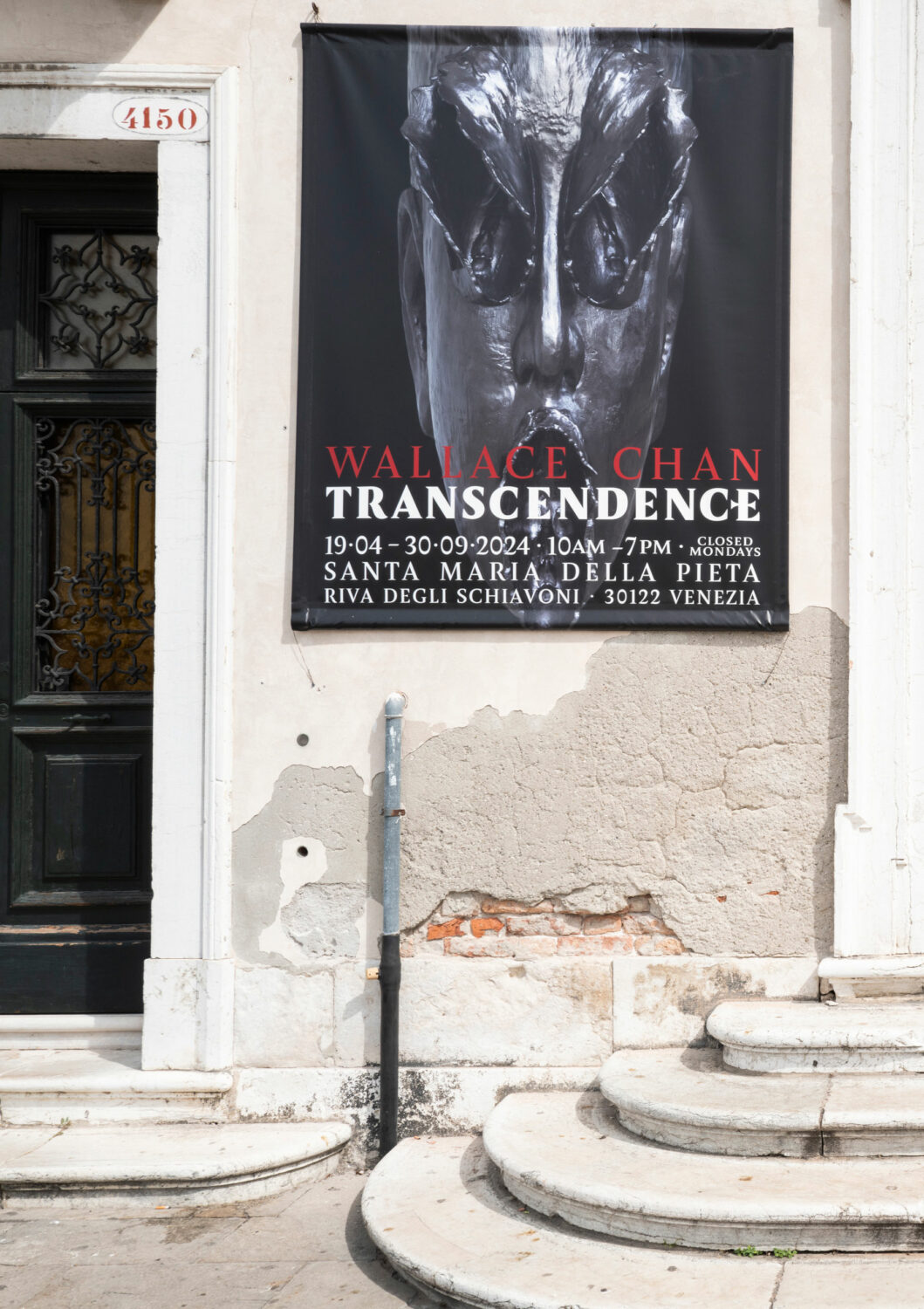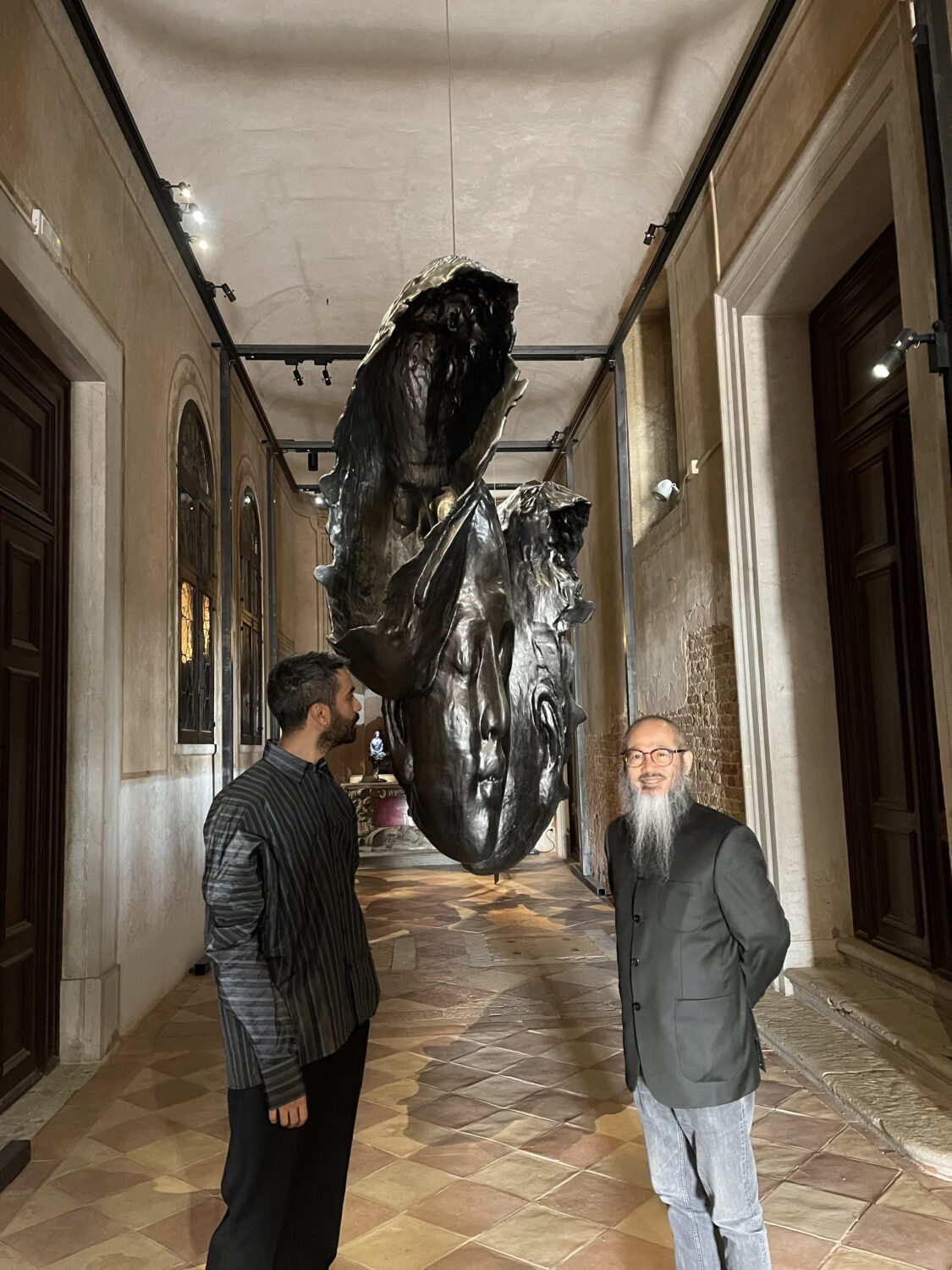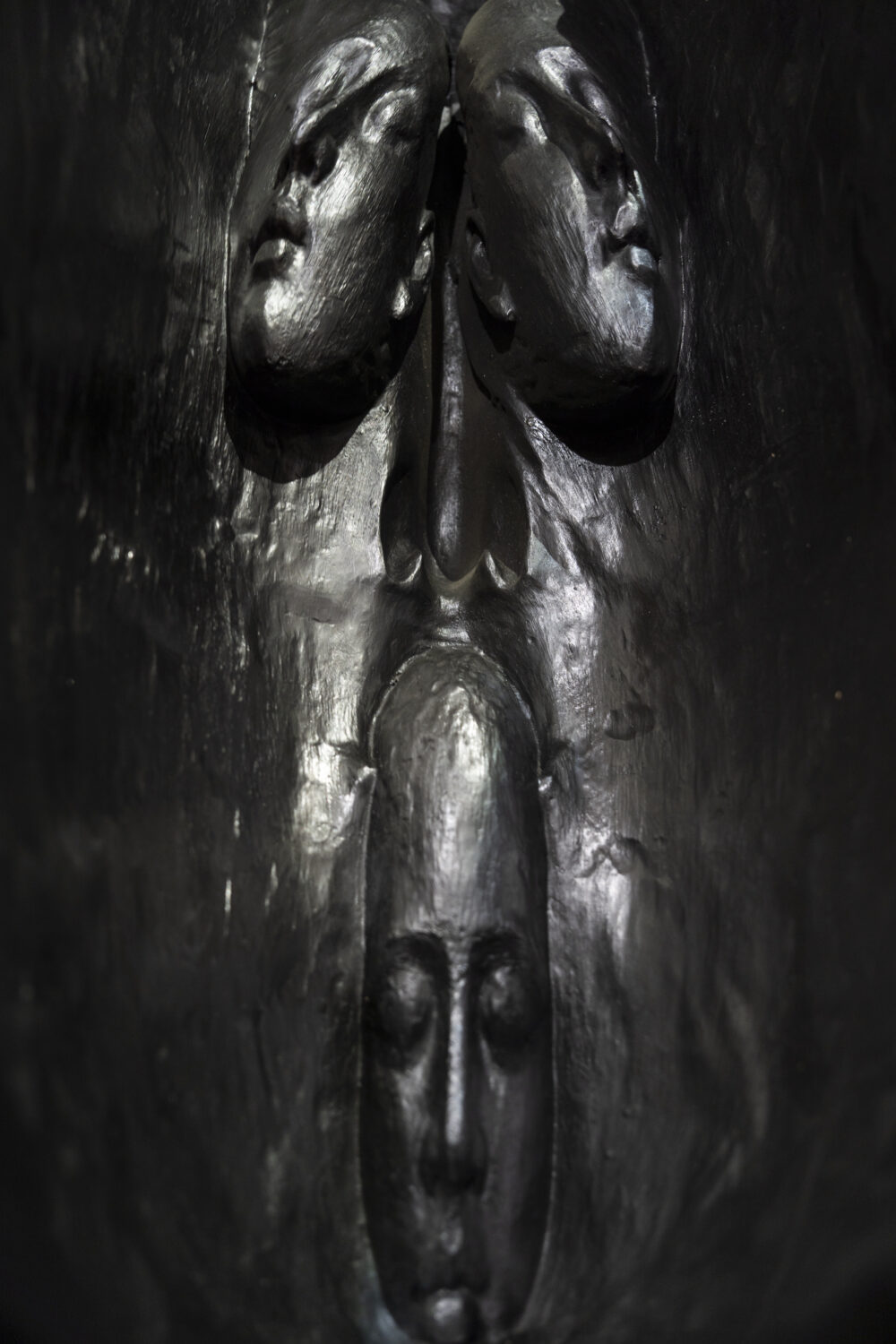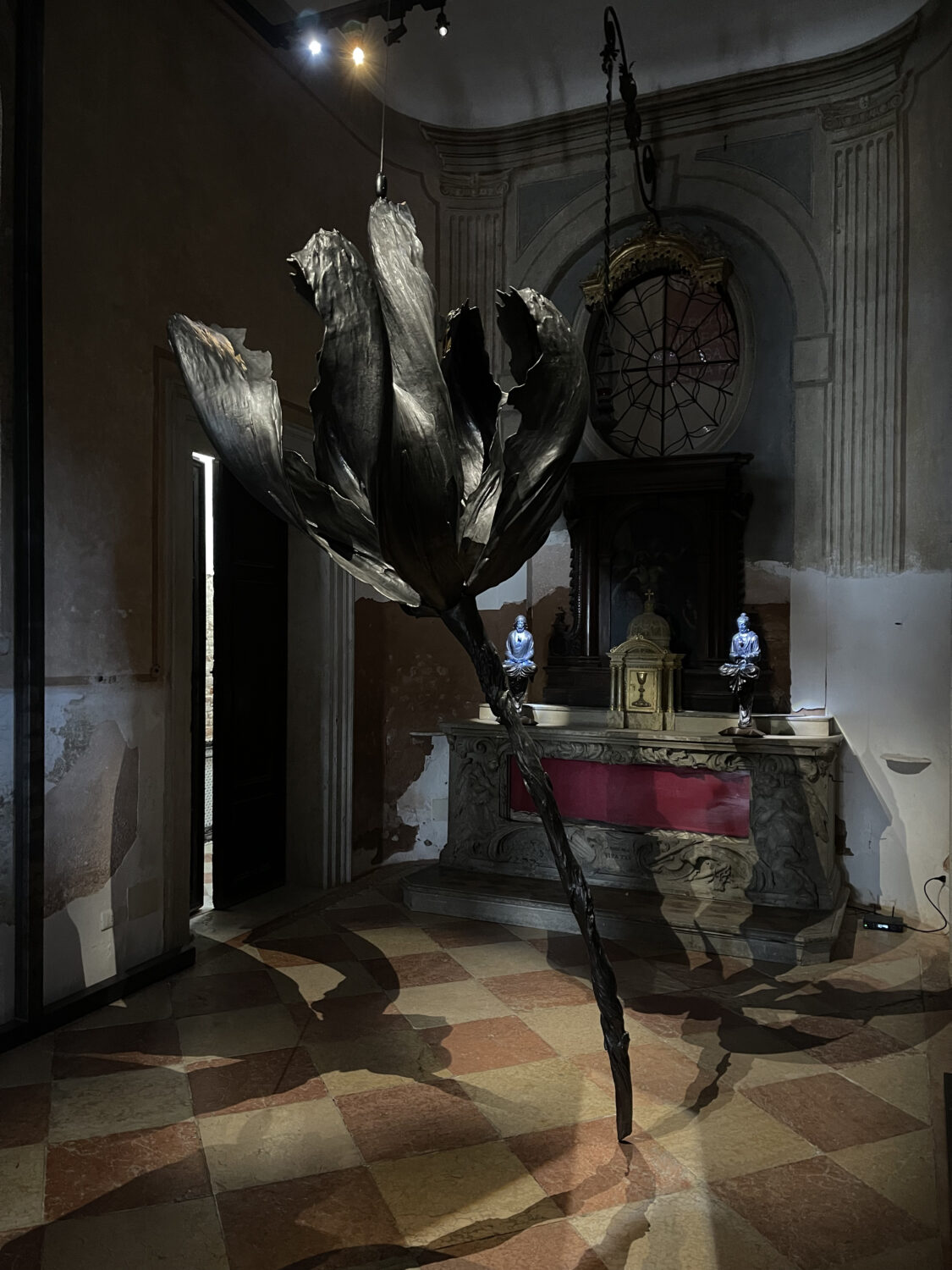How Wallace Chan’s Stint as a Monk in Tibet Shaped His Latest Show
By Keshav AnandChinese multidisciplinary artist Wallace Chan — who pioneered the Wallace Chan Porcelain, a material five times stronger than steel, and more recently, titanium’s unprecedented use in large-scale sculpture, among other innovations — returns to Venice with the exhibition, Transcendence. On display until 30 September 2024 at the Chapel of Santa Maria della Pietà, the show features a series of complex metal sculptures soundtracked by an eerie composition from Brian Eno.
This latest presentation follows Chan’s 2023 exhibition, The Wheel of Time, held by Christie’s in London — the largest display of his half-a-century spanning practice to date, encompassing sculpture and jewellery. And opening during the summer, Chan will be the first living artist to have a solo exhibition at the Shanghai Museum. Catching up with the artist after a few years, Something Curated’s Keshav Anand spoke with Chan in Venice.

Keshav Anand: Welcome back to Venice! Do you have any Venice rituals — what was the first thing you did when you arrived in the city?
Wallace Chan: The first thing I did, before I even put my suitcases down in my hotel room, was to come and see the exhibition space — to see the lighting, check the sound, and consider how the sculptures could be hung. The work is very much a dialogue between the sculptures, the light and the soundscape. Because there is natural light, as well as the light inside, it took a lot of time to find a solution that worked well for the works being shown.
KA: What is the thinking behind the sound in the space?
WC: James Putnam, the curator, suggested this space — a historic church — because we wanted audiences to experience a sense of tranquillity. With this in mind, he introduced me to composer Brian Eno. When I first heard Brian’s music, I fell in love with it. It reminded me of my time practicing Buddhism in Tibet. While at the monastery, there was a day I heard some music that no one else could hear.
At the time I had a severe headache — I couldn’t explain why this was happening. But the music in the show somehow reminds me of that incident. The sound interacts with the sculptures. The sculptures, which use both yin and yang, the concave and convex, allow the music to go into the hollow parts, producing something like an echo.

KA: It’s interesting with these sculptures that there are spaces within them that can accommodate the body. Given the height at which they’re positioned, it feels like an invitation to put your head inside them — particularly now you mention their capacity to amplify sound. This consideration of the body makes me think about your work in jewellery. Of course there is a degree of functionality which jewellery possesses that might not be present here — but there still feels like some overlap in thinking.
WC: I pay close attention to ergonomics when conceiving jewellery. Gravity plays an important role in this. I am always between the worlds of imagination and the practicalities of creation. For the large-scale sculptures, I was trying to create a state between molten and solid. A sense of weight and weightlessness — something that feels ephemeral.
There is infinity in the big and the small. If you put a gemstone under a microscope and enlarge the image, there is no limit to where you can go and what you can see. Without the skills I learnt from jewellery, I would not have been able to create such large-scale works. I trained myself to go from micro to macro, and enjoy the freedom to move between the two. Moving between jewellery and sculpture makes perfect sense to me.
KA: Religious symbols stand out in this exhibition, particularly those associated with Buddhism and Christianity. I’m curious to learn more about the role religion has played in shaping you and your work?
WC: At the ages of eight and nine, I would go to the church for bread and milk, because I was from a humble family and it was free. And when I would return home, my grandmother would ask me to burn incense for our ancestors — for protection. Since I was young I felt conflicted between these two religions, which existed together in my world. When I became older, and learned more about Buddha, I decided to become a Buddhist monk and gave away all of my belongings. Later, I returned to the secular life because I realised that all religions are about great love: love of history, humanity, culture, and knowledge. All religions are interconnected. Today I have no religious beliefs but I appreciate that all religions are philosophies — spiritual pursuits.

There’s an interesting story about my name. When I was young and very poor, working as a carver, I lived on a rooftop. One day, two missionaries came to my door. I felt like I had nothing to lose, so I opened the door to these strangers. They wanted to talk with me about Christianity. After spending some time talking, they asked me if I had an English name, and I said, “No no, just my Chinese name.” And then they said, “You actually look like our friend Wallace. What do you think about that name?” I thought, “Wallace Chan — yes, that’s fine.” [Laughs] I started signing all my cameos and intaglios with this name.
And when I started to work on the Great Stupa for Taiwan’s Buddhist Mountain, I needed to study a lot of Buddhist scripts, learning about the lives of Buddha. It was then that I realised that in one of Buddha’s lives, his name was Shìyīng — which is my Chinese name, given to me by my parents. I feel like am forever between these two religions and I am intrigued by this sense of destiny. The works in this show are about spirituality and interconnectedness but in many ways are also shaped by my upbringing and experience.
KA: Wow — thank you for sharing those stories! I want to ask you another question about the subjects of the new sculptures. It feels as though everything in the room is directing the viewer to this enormous tulip. What is the significance of this flower?
WC: I have visited the tulip many times during my creative life. It started in the 80s. I was determined to carve the best tulip I could possibly carve — and I had a bit of a struggle ordering a particular tulip from the Netherlands. It cost me 80 Hong Kong dollars to ship it. At that time this was a lot. A box of rice was 1.50 HKD. After thinking about it for some time, I knew I didn’t want to give up on this so I decided to go for it. But when the tulip arrived at my workshop in Macau — which was very warm — the flower quickly faded. I was so sad.

It takes a long time to carve something and I wanted to work from the flower. So I put the flower into the fridge. In the cold, it came alive a little. I took it in and out of the fridge several times until I could finish my carving. That was my first struggle with the tulip — and it’s a memory I always associate with the flower. So I suppose, behind the most beautiful blossom there is struggle. And at the end of this exhibition you see a blooming tulip, but if you look at the stem, there are four twisted human faces, struggling. Nature has taught me that I need to fill the gaps with imagination.
KA: What are some of your favourite cultural spaces in Hong Kong?
WC: As an artist, I wake up every day and view the world with new eyes. So even waking up in Hong Kong day after day, I remain curious about the city and find I am most inspired by watching the streets. But if I had to share specific recommendations, I would say M+ and the Hong Kong Palace Museum.
Wallace Chan’s Transcendence is on display at Santa Maria della Pietà, Venice until 30 September 2024.
Feature image: Giacomo Cosua